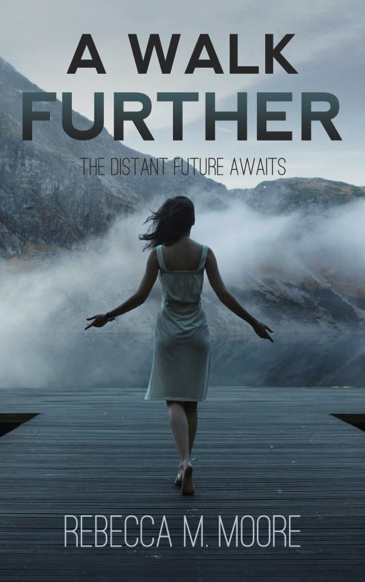
Today’s guest post is from book cover designer Joshua Jadon (@joshuajdesign).
Your book cover design is what draws people into the story you crafted from only a blank page and an idea. It is likely the image that your readers will most associate with your story, so let’s look at nine ways you can start building the cover design you always wanted.
1. Decide if there’s a central image in your story that could be used.
If you have a recurring symbol or image throughout your story, consider a creative way to incorporate it into the cover. Whatever imagery you thought was profound enough to make it into the pages will be profound enough to grace the front of your book cover.
2. Look for metaphors.
Maybe your theme is about failing and trying again. Why not represent that on your cover? Let your background be a crumpled piece of paper, flattened smooth again for a fresh start. You can help your readers immediately reflect upon the theme of your novel before they even start the first page.
3. Focus on just one image.
Don’t let yourself get carried away by trying to represent by all the symbolism in your story or every theme you want to represent. Sometimes less is more, and that definitely applies to your book cover design. Use space wisely, and err on the side of caution with simple imagery and keep the focus on just one image. You don’t want to overwhelm or confuse.
4. Hire an artist to help.
If writing is your primary strength, then consider hiring a professional artist or designer to create a one-of-a-kind artwork for your front cover. That way, you get a unique book cover with creative flair that you envisioned and commissioned.
5. Choose colors that represent your story.
Is your story a dramatic thriller? Consider bold red, sinister black, and deep ocean blues. Is it a read best suited for a beach day? Waves of cool blues and jade greens can wash over your cover to give a laid-back feeling. There’s a science to color psychology that you can capitalize on for your cover design.
 6. Contrast creates eye-catching covers.
6. Contrast creates eye-catching covers.
If you’re struggling to come up with a color scheme, consider taking it all the way back to black and white. Simple, classic contrast helps a cover pop, and is timeless and classic. Monochromatic color schemes can be a great way to let your fonts and words remain at the forefront of the reader’s attention, while the image becomes part of the background.
7. Don’t forget the importance of text.
Just as you need to choose a color that represents your story well, you need to choose a font that matches it. Is your audience mostly women? If so, you may prefer a scripted font with feminine flair. Men often prefer simple, bold text that is easy to read. Your audience is the biggest factor in the success of your book sales, so make sure that your cover incorporates elements that will appeal specifically to that audience.
8. Reviews are important.
Did you snag a great review from a well-known person in your field? Put it on your cover! Even if it means simplifying your book cover design in other aspects, it’s well worth it to have the popularity of another individual verify the quality of your story or content. Their name on your cover, especially if you’re a first-time author, lends credibility.
9. Add a subtitle or a teaser.
Give readers a quick glimpse of what they’ll find tucked between the covers of your book with a short subtitle or a teaser. This takes less time to read than the synopsis on the back of the book and can draw readers in immediately. Make sure the text is smaller than your title, but still clear. It shouldn’t jump out at readers at first, but should be easily read.
Authors: What do you think contributes to an effective cover design? Share your thoughts in the comments.
Visit designer Joshua Jadon at his blog or on Twitter (@joshuajdesign).

Book cover designer Joshua Jadon works with New York Times and internationally bestselling authors of all genres around the world. In 2013, after attending Central Michigan University for two months, he dropped out and pursued book cover design full-time as a career. Joshua currently operates out of Grand Rapids, Michigan, and loves to spend his time cooking, listening to music, and designing books on the computer.

[…] view post at https://janefriedman.com/9-tips-to-building-the-book-cover-design-you-always-wanted/ […]
[…] This blog post from book cover design Joshua Jadon will give you some tips to consider, whether you are doing it yourself or working with a cover design. […]
[…] 9 Tips to Building the Book Cover Design You Always Wanted (Jane Friedman) Your book cover design is what draws people into the story you crafted from only a blank page and an idea. It is likely the image that your readers will most associate with your story, so let’s look at nine ways you can start building the cover design you always wanted. […]
Good ideas, especially the one about finding a “central image.” I’d suggestion looking through some of the major stock photo services for that ‘just right’ picture. They have many thousands to choose from, almost all profesionally done.
That can even prove fun. To find just the right cover for one book, I joked with a woman friend that I had to endure a grueling ordeal. I spent several hours looking at the hundreds of search results for “pretty girl hospital.” Yes, real hard labor. Find Hospital Gowns and Other Embarrassments on Amazon, and you’ll see that the one I found was perfect as a “central image.” Recognizing the perfect picture is a lot easier and cheaper than conceiving the idea for one and paying someone to take it. Here’s the result:
https://www.amazon.com/Hospital-Gowns-Other-Embarrassments-Hospitals/dp/158742066X/
Don’t be afraid to try something different either. My latest, Embarrass Less is a practical guide for dealing with embarrassment in hospitals. I despaired as I looked at cover images that showed its target audiences, medical & nursing students or hospital staff. A picture of a single smiling nurse might be appealing. Pictures with nurses and physicians of various ages lined up in a row always looked dreadfully dull. I intended the book to be a textbook, but I did NOT want it to look like a one or read like one.
Look at “Embarrass Less” on Amazon and you’ll see the solution I hit upon. I jumped out of that hospital staff box and used pictures of two cute kids playing doctor. That let my book description contrast how much fun playing doctor was as a kid with how uncomfortable the real thing often is for hospital patients.
https://www.amazon.com/Embarrass-Less-Practical-Students-Hospitals/dp/1587420929
—–
One other suggestion. Check out covers done by pros such as Joshua. Go to Amazon and display the bestselling books in your field or genre. Find one you like and make your cover similar or, if you’re using a cover designer, find several you like and ask for one like them.
We shouldn’t forget that all book covers have to stand out as thumbnails of various sizes on Amazon and elsewhere. With that in mind, I wouldn’t recommend the example shown. The subtitle dies, and it’s too monochromatic.
I’ve learned that the hard way. The covers of my first three books, all done by professional designers, are overdue for replacement.
[…] Joshua Jadon: 9 Tips to Building the Book Cover Design You Always Wanted […]
Given Amazon’s ebooks are teeny tiny images on the search engine, cropping the central image to add a snippet from someone’s review could harm the cover rather than improve it. That suggestion seems better suited for physical books where clients actually have a chance to stare at the cover upfront. The other suggestions are quite logistical.
Presumably you will write more than one book. That being the case the author’s name needs to be prominent because that is what a reader will search for rather than the previous book title. Bear in mind Amazon’s smallest thumbnail image of your book – 58 x 87 pixels Your author name should be readable at that size.
[…] https://janefriedman.com/9-tips-to-building-the-book-cover-design-you-always-wanted/ Put great reviews on the cover. […]
[…] 9 Tips to Building the Book Cover Design You Always Wanted | Jane Friedman […]